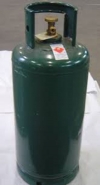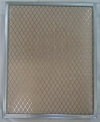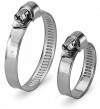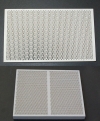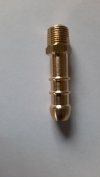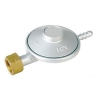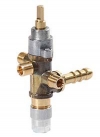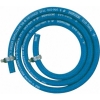The glossary below will help you become acquainted with some of the aspects of our gas heater components.
ATMOSPHERE ANALYSER
It is a control device that reacts to the lowering of the amount of oxygen in the atmosphere of a room with an insufficient air change. It consists of: . pilot burner . thermocouple . electrode assembled on a fixing bracket. The thermocouple is a thermoelectric element which is sensitive to the temperature of the pilot burner flame. In normal conditions the flame generates an electromotive force to feed the magnetic unit of the safety valve, allowing gas to flow into the burner. If the amount of oxygen lowers, combustion is no longer optimal. In this case the pilot burner flame modifies itself and the generated electromotive force is no longer sufficient to feed the magnetic unit, so the safety valve shuts off the flow of gas to the burner putting the appliance into safety mode.
CATALYTIC PANEL
Catalytic combustion is a chemical reaction activated through a catalyser, the characteristics of which remain unchanged over time. The reaction occurs between the feed gas which flows inside the burner and the oxygen of the surrounding atmosphere. This form of combustion produces no flame.
LIQUIFIED PETROLEUM GAS (LPG)
LPG is composed of mixes of gaseous hydrocarbons at ambient temperature, usually propane and butane. This feature permits storage of large quantities in metal recipients which are easy to manage (cylinders and “tanks”), allowing its wide use as primarily domestic fuel, but also for traction and small/medium scale production activities. Originally, LPG is odourless, but it is odorized with Ethanethiol so that any leaks can be smelt, even without tools.
METHANE GAS
Methane is the principal component of natural gas, and an excellent fuel as it produces the largest quantity of heat per unit mass. Methane is odourless, colourless and tasteless, so to be distributed in domestic networks it must be “odorised” by the lapping of a liquid with a characteristic “gas odour”. This procedure is essential so that the presence of gas can be detected in the room and decrease its danger.
VALVED TAP
It serves to regulate the flow of gas into the different positions set and to interrupt the passage of gas in case the flame accidentally switches off (safety system). It consists of an attachment for the entry of gas, attachments for where the gas exits for the connection with the burner, an attachment for the thermocouple for the safety system and a rod where the button is located to regulate the different possible positions.



